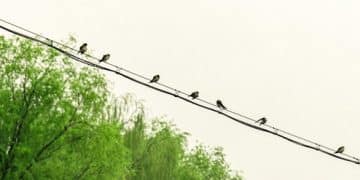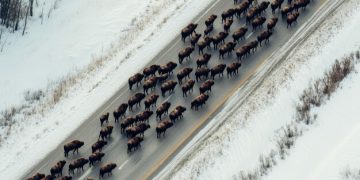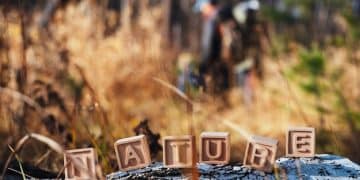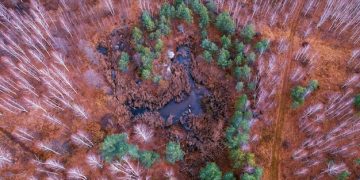Wildlife Sightings: How Citizen Science Aids US Conservation

Reporting wildlife sightings through citizen science initiatives provides critical data for conservation efforts in the US, enabling researchers and wildlife managers to track populations, understand habitat use, and monitor the impacts of environmental changes.
Have you ever spotted a rare bird in your backyard or seen a deer bounding through the local park? Turns out, simply reporting wildlife sightings can make a big difference in conservation efforts across the US by helping scientists and conservationists understand and protect our local wildlife.
The Power of Citizen Science in Wildlife Conservation
Citizen science, also known as community science, involves public participation and collaboration in scientific research. In the context of wildlife conservation, it empowers everyday individuals to contribute valuable data and insights, helping scientists and conservationists better understand and protect animal populations and their habitats.
The rise of citizen science initiatives has revolutionized the way wildlife data is collected and analyzed, offering a cost-effective and efficient means of gathering extensive information over broad geographical areas.
Why Citizen Science Matters for Wildlife
Traditional wildlife monitoring methods, such as field surveys and camera trapping, can be costly and time-consuming, limiting the scope and frequency of data collection. Citizen science overcomes these limitations by engaging a vast network of volunteers to collect data, supplementing the efforts of professional scientists and expanding the spatial and temporal coverage of monitoring programs.
- Increased Data Collection: Citizen scientists can collect data at a scale that would be impossible for professional researchers alone.
- Cost-Effectiveness: Utilizing volunteers reduces the financial burden of data collection.
- Public Engagement: Citizen science fosters a sense of stewardship and promotes conservation awareness among participants.
- Broad Spatial Coverage: Data can be collected across wider geographical areas, providing a more comprehensive picture of wildlife distribution.
By harnessing the power of citizen observations, conservationists gain access to a wealth of information that can inform management decisions and conservation strategies.
In summary, citizen science enhances wildlife conservation by providing additional data sources, engaging community members, and saving costs. Its integration with traditional methods strengthens preservation initiatives.
Key Platforms for Reporting Wildlife Sightings in the US
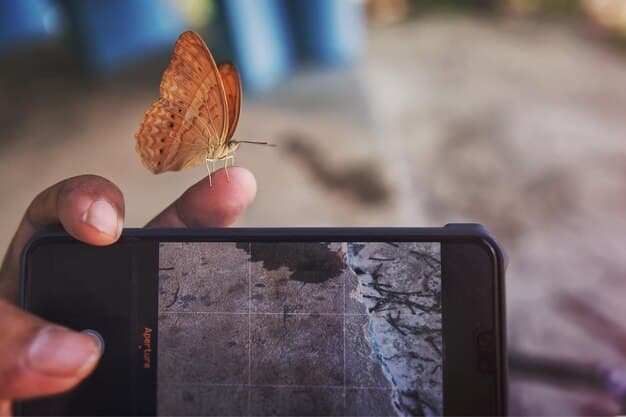
Several platforms in the US have emerged as pivotal tools for collecting and organizing wildlife sighting data from citizen scientists. These platforms provide accessible interfaces, user-friendly tools, and robust data management systems that encourage public participation and ensure data quality.
Here are a few key platforms that serve as hubs for reporting wildlife observations:
- iNaturalist: A joint initiative by the California Academy of Sciences and the National Geographic Society, iNaturalist is a global platform where users can record observations of plants, animals, and other organisms. Sightings are often verified by experts, contributing to a growing database of biodiversity information.
- eBird: Managed by the Cornell Lab of Ornithology, eBird focuses specifically on bird sightings. It allows users to log their birdwatching observations, track their bird lists, and contribute to avian research and conservation efforts.
- Nature’s Notebook: Developed by the USA National Phenology Network, Nature’s Notebook encourages users to track the phenology (seasonal life cycle changes) of plants and animals. This initiative provides valuable data on how species are responding to climate change and other environmental factors.
These platforms not only facilitate data collection but also offer educational resources, identification tools, and opportunities for participants to connect with other nature enthusiasts and experts.
Utilizing these platforms enhances data collection, engages participants, and contributes to ecological knowledge, fostering collaboration between researchers and enthusiasts.
How to Report Wildlife Sightings Effectively
Reporting wildlife sightings may seem as simple as noting what you saw, but providing detailed and accurate information can significantly enhance the value of your observations for conservation purposes.
Here are some best practices for reporting wildlife sightings effectively:
Documenting Your Observations
The first step in reporting wildlife sightings is to document your observations thoroughly. This includes noting the date, time, and location of the sighting, as well as details about the animal’s behavior and habitat.
Tips for Accurate Reporting
- Take Photos or Videos: Visual documentation can aid in species identification and provide additional information about the sighting.
- Record Detailed Descriptions: Include information about the animal’s size, color, markings, and any unique features.
- Note the Habitat: Describe the surrounding environment, including the type of vegetation, water sources, and terrain.
- Observe Behavior: Record what the animal was doing at the time of the sighting, such as feeding, resting, or interacting with other animals.
By providing thorough and accurate information, you can maximize the value of your wildlife sighting reports and contribute meaningfully to conservation research.
In conclusion, the level of detail and precision in your reports greatly enhances their contribution to wildlife preservation. Detailed records provide significant insights.
The Impact of Citizen Science on Wildlife Research
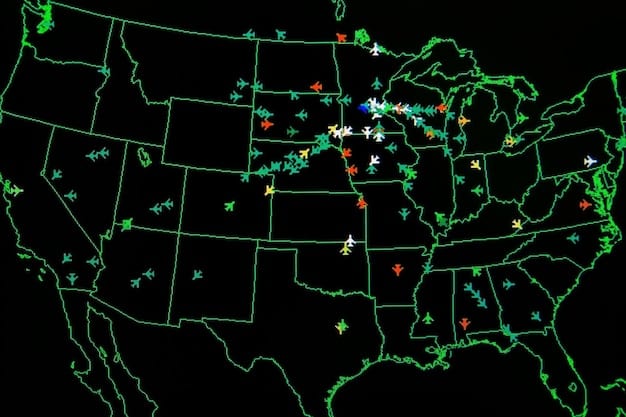
Citizen science data has proven invaluable in many research and conservation projects, offering scientists a cost-effective and efficient way to gather information and track wildlife populations.
One of the most significant impacts of citizen science is its ability to provide broad-scale data on species distribution, abundance, and habitat use. By analyzing observations reported by citizen scientists, researchers can identify patterns and trends that would be difficult or impossible to detect using traditional methods.
Case Studies: Citizen Science in Action
Several successful case studies demonstrate the impact of citizen science on wildlife research and conservation:
- Christmas Bird Count: Conducted annually by the National Audubon Society, the Christmas Bird Count has been monitoring bird populations since 1900. Data collected by volunteers provides long-term trends and informs conservation strategies.
- Monarch Watch: This program engages citizen scientists in tagging monarch butterflies to track their migration patterns. Data from Monarch Watch has been crucial in understanding the factors influencing monarch populations and developing conservation plans.
- Lost Ladybug Project: By inviting citizen scientists to report ladybug sightings, this project has helped researchers track the distribution of native and non-native ladybug species, contributing to our understanding of ladybug ecology and conservation.
These examples showcase the ability of citizen science to generate valuable data, inform conservation efforts, and engage the public in meaningful research.
The ability to aggregate insights from large pools of volunteers greatly enhances the ability to monitor shifts and support better conservation strategies.
Challenges and Considerations in Citizen Science
While citizen science efforts provide many benefits, there are also things that need to be considered to ensure data quality and reliability. Addressing these challenges is important for improving the accuracy and impact of citizen-based monitoring programs.
One of the main concerns is the potential for biased or inaccurate data due to volunteer training or knowledge levels. To address this, it’s important to provide comprehensive training to participants, implement data validation protocols, and encourage careful observation and documentation.
Addressing Data Quality Concerns
Ensuring data quality in citizen science projects involves several key strategies:
- Standardized Protocols: Using clear, consistent protocols empowers people to collect comparable data.
- Training and Education: Conducting training sessions ensures volunteers can accurately identify animals and record observations.
- Data Validation: Analyzing data for errors and outliers helps to filter inaccuracies and boost reliability.
Another challenge is maintaining participant engagement and motivation over the long term. To counter this, it’s important to give volunteers regular feedback, recognize their contributions, and create opportunities for them to connect with other participants and conservation professionals.
By proactively addressing these challenges, citizen science initiatives can elevate data quality, foster long-term involvement, and boost the influence of volunteer-based wildlife preservation.
In overcoming these challenges, continuous improvement in monitoring methods will create more robust data sets, strengthening both scientific findings and preservation plans.
The Future of Citizen Science and Wildlife Conservation
The role of citizen science in wildlife conservation is likely to expand in the coming years, driven by technological advancements and a growing awareness of the importance of public participation in scientific research.
As technology continues to evolve, new tools and platforms will emerge that make it even easier for citizen scientists to collect, share, and analyze data. Smartphone apps, online mapping tools, and artificial intelligence algorithms are already being used to enhance citizen science projects and improve the accuracy and efficiency of data collection.
Emerging Technologies in Citizen Science
Several emerging technologies hold promise for the future of citizen science:
- AI and Machine Learning: AI can automate species identification, assess data quality, and identify trends in citizen science data.
- Remote Sensing: Satellite imagery and drone technology can provide broad-scale data on habitat conditions and wildlife populations, complementing ground-based observations.
- Gamification: Integrating game-like elements into citizen science projects can encourage participation and motivate volunteers to collect data more consistently.
By embracing these new capabilities, citizen science initiatives can leverage the power of technology to solve tough issues in protecting animals and encourage a spirit of cooperation among people.
The melding of modern technologies and participation by engaged communities sets the framework for innovative strategies that protect ecosystems and preserve animal species.
| Key Point | Brief Description |
|---|---|
| 🦉 Reporting Sightings | Citizen reports provide broad data on wildlife distribution and behavior. |
| 📸 Accurate Data | Detailed photos and descriptions improve the reliability of reported sightings. |
| 🌐 Key Platforms | iNaturalist and eBird are essential for logging and verifying sightings. |
| 🌱 Conservation Impact | Citizen science aids research, helps conservation management, and educates communities. |
Frequently Asked Questions
▼
Reporting wildlife sightings is crucial because it provides valuable data for tracking populations, monitoring behaviors, and identifying conservation needs. This information helps researchers and conservationists make informed decisions.
▼
Include the date, time, and specific location of the sighting. Also, provide details about the animal’s appearance, behavior, and any unique characteristics. Photos or videos can be very helpful.
▼
These projects engage volunteers to collect data over broad areas and long periods, enhancing research capabilities. They also raise awareness about conservation and promote community involvement in protecting wildlife.
▼
Yes, platforms like eBird specialize in bird sightings, while iNaturalist covers a wide range of species. Nature’s Notebook focuses on seasonal changes in plants and animals, providing different focuses.
▼
Take clear photos, record detailed descriptions, and note the habitat. If possible, compare your observations with field guides or consult with experts for accurate species identification, improving accuracy.
Conclusion
In conclusion, reporting wildlife sightings through citizen science initiatives offers a powerful way to contribute to wildlife conservation efforts in the US. By participating in these projects, individuals can help gather critical data, inform conservation strategies, and promote a greater understanding and appreciation of the natural world. Embracing citizen science not only supports ecological research but also fosters a sense of stewardship and community engagement in protecting local wildlife for future generations.

